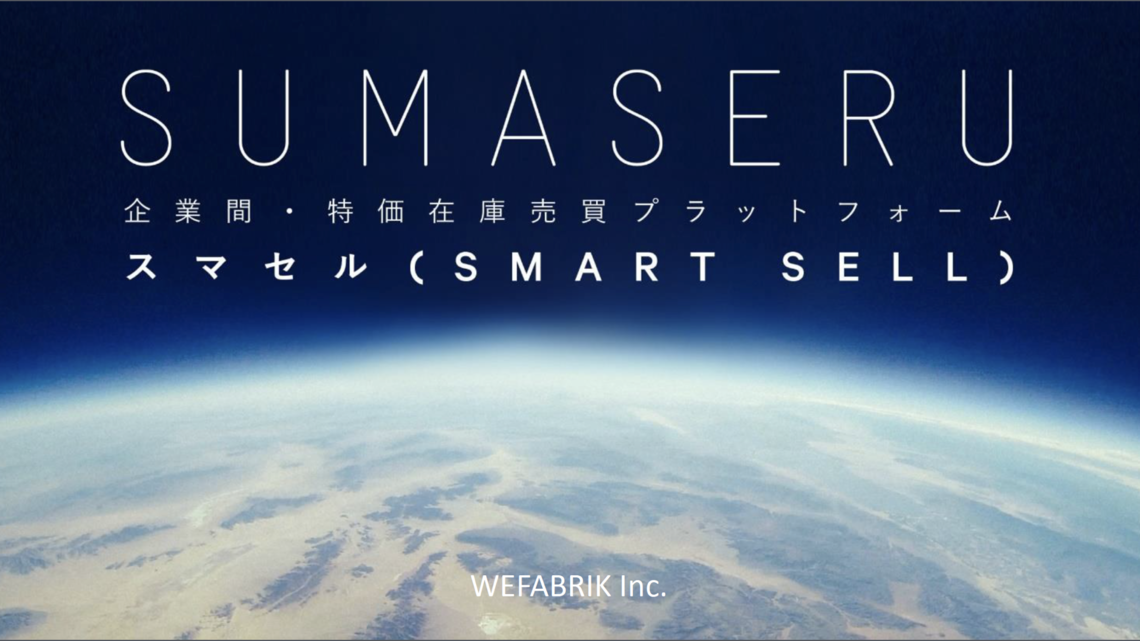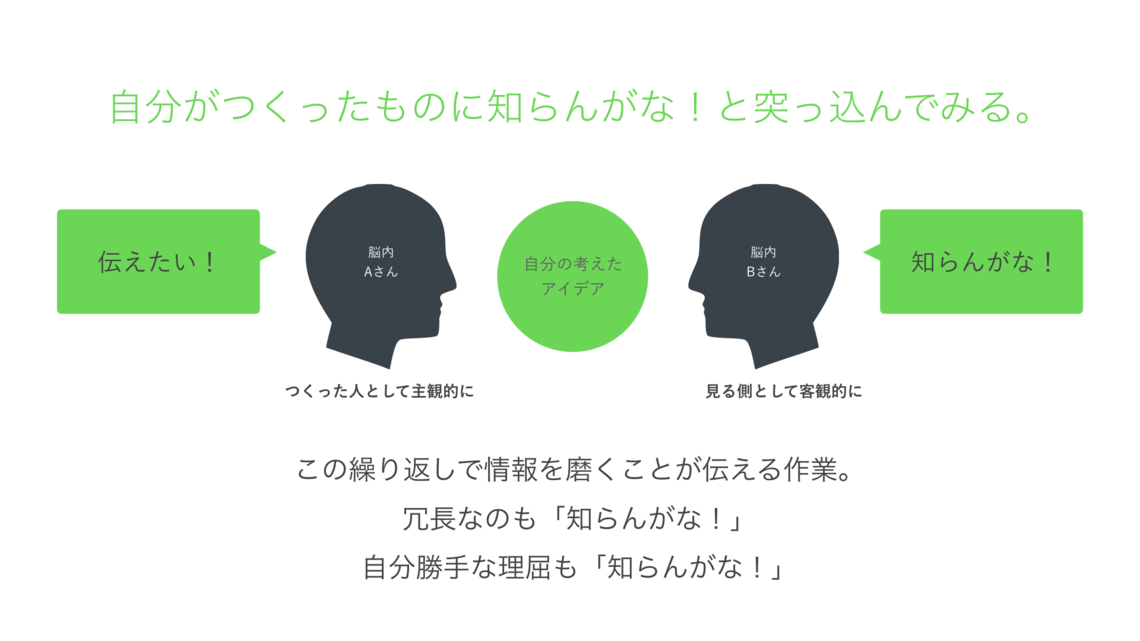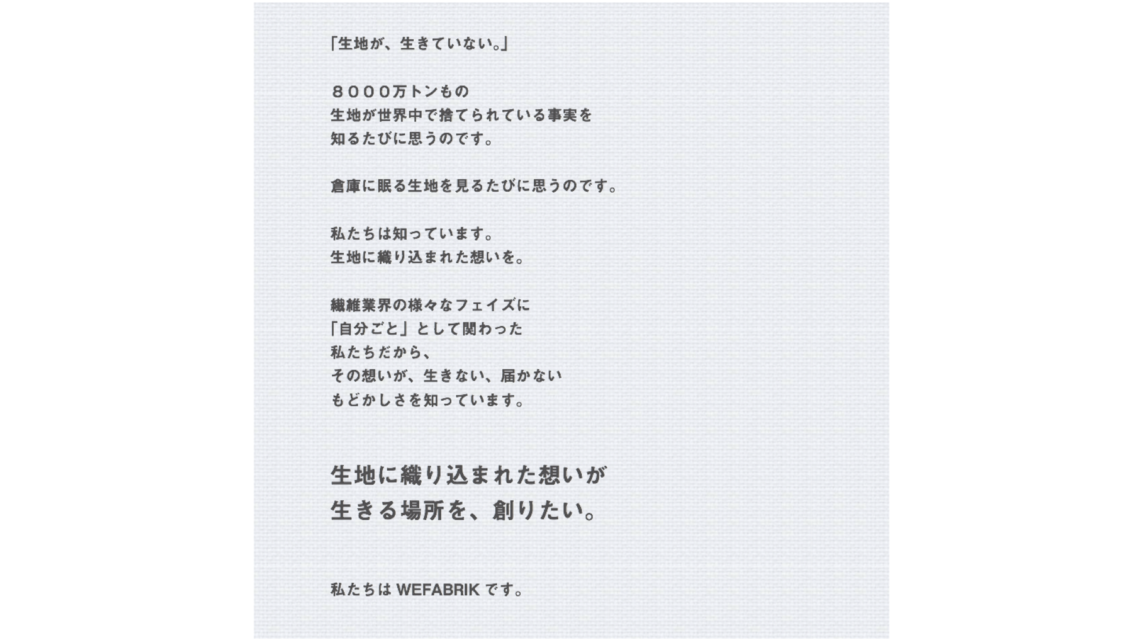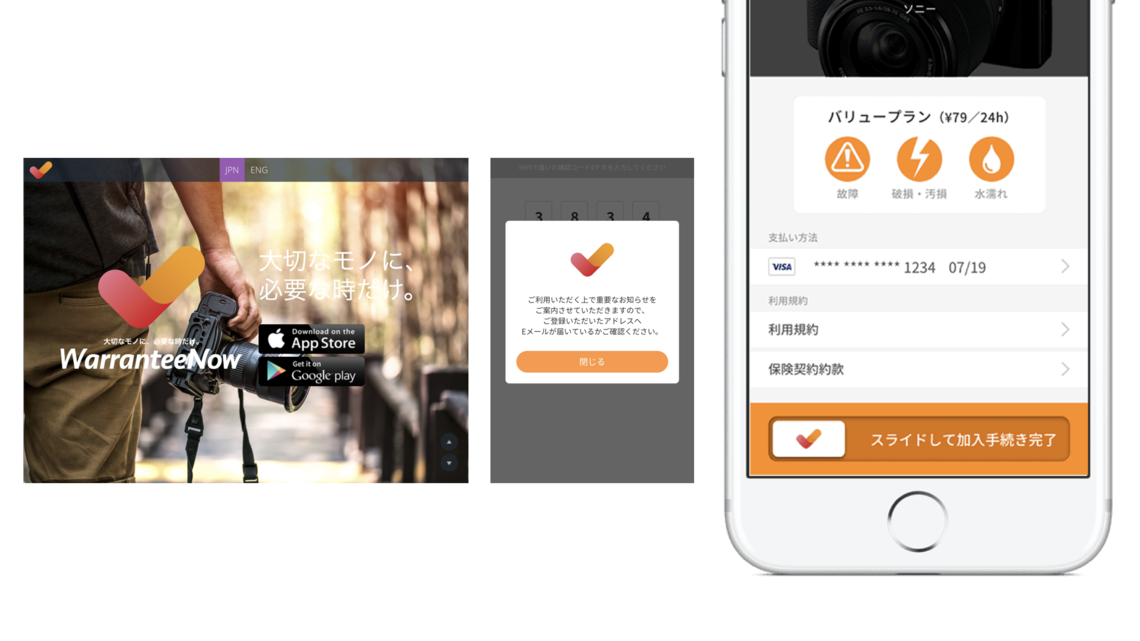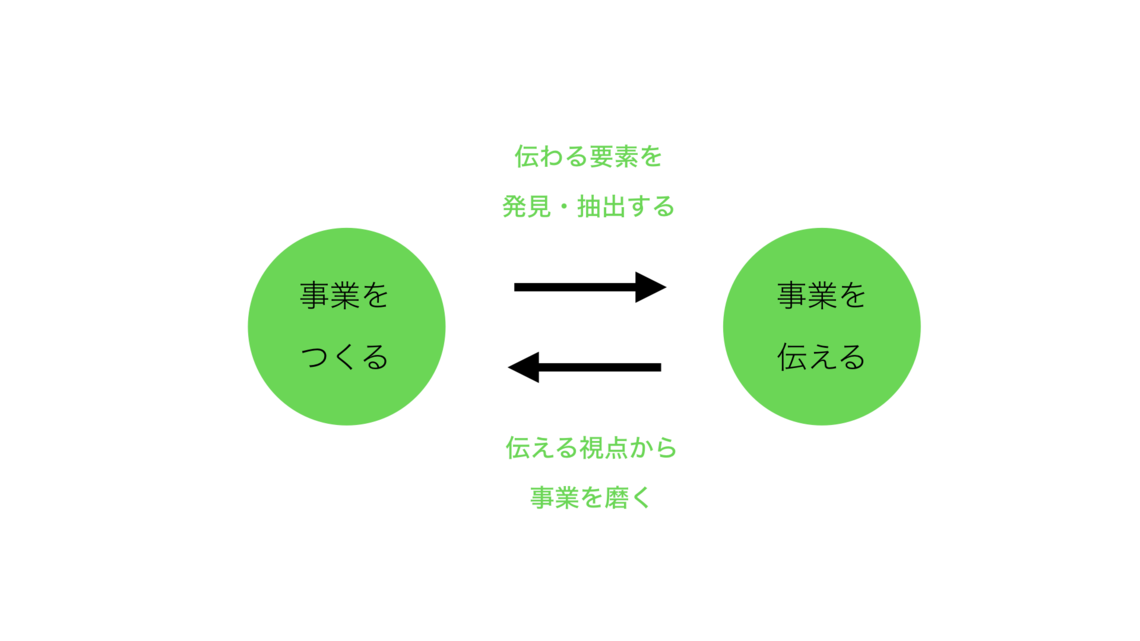Hello, I'm Kei Suzuki, a copywriter. I manage a service called "TANTEKI." TANTEKI is designed for startups and corporate business development departments, helping them design their "message" into a "form that resonates."
In this column, I'll introduce the service and discuss "how to shape it into a form that resonates." For the design portion, my partner, Art Director Taichi Sayama, has written the section.
*This article is based on a presentation by TANTEKI at a branding workshop for portfolio companies hosted by 500STARTUPS JAPAN.
【Table of Contents】
▼Why Messages Fail to Connect: Inadequate "Information Preparation"
▼ How to shift from "Who cares?" to "Maybe I'll give it a listen"
▼Case Studies on "Information Preparation"
▼Preparation also makes design function efficiently
▼Discover and extract key communication elements. Make your communication concept concise!
The reason it doesn't get through is because the "preparation of information" isn't done.
First, this image. It's the cover of a business plan for a startup called WEFABRIK.
"They're doing something on a global scale..."
"A high-minded startup"
"Doesn't seem relevant to me"
You probably had reactions like these.
Startups aiming to create products and services that don't yet exist in the world. Many face the challenge that their business ideas or ventures are too novel to communicate effectively, or their passion is too intense to convey clearly.
Could Dentsu Inc. apply its advertising expertise to solve this problem? This is how our new startup support initiative, "TANTEKI," began. We assist at a stage even before branding or PR—discovering and organizing what needs to be communicated in the earliest business phase. In other words, we handle the "preparation of information."
We don't necessarily assume media exposure or advertising as a prerequisite, nor do we provide ready-to-use creative assets. TANTEKI supports communication prototyping—shaping the startup's business and ideas into a form that resonates. However...
The truth is, most companies haven't done this "information preparation" work.
This isn't limited to startups; it applies to large corporations too. Typically, when we produce advertising, we pore over vast amounts of materials to distill them into a plan. Extracting what truly needs to be communicated from this sea of information is actually the most crucial and demanding task.
When creating a new business, you must consider every necessary aspect thoroughly. But when communicating, you condense those points into a concise "communication concept." Once this is established, you can deliver a unified message and expand it as needed. However, being concise isn't just about simplifying information. Let's rethink what it means to "communicate effectively."
How to shift from "Who cares?" to "Maybe I'll give it a listen"
First, "effective communication" can be rephrased as "changing the recipient's feelings from A to B."
The result—a change in the listener's feelings—is crucial, but this is difficult.
most people are thinking "Who cares?" inside their heads when someone else is talking.
You could even call it indifference.
For most startups, the passionate desire to "make the world better" in their proposals is met with "Who cares?". Even explanations of innovative services get a "Who cares?".
To achieve the goal of "communicating," you must confront this stubborn "I don't care" mindset. To do this, it's crucial to create both a "person I want to reach" and a "person who doesn't care" within yourself. Then, repeatedly subject the ideas of the "person I want to reach" to the critical feedback of the "person who doesn't care," refining your message. Repeating this process helps you find the point where the "person who doesn't care" opens up and thinks, "Maybe I should listen a little."
However, don't try to convey everything. Set a victory condition: "If I get this far, I've won."
Imagine New Year's when relatives gather, and your grandfather asks, "How's work?" How would you respond? I'd say, "I met this celebrity, [Name]!" Topics like "the merits of advertising creativity" or "the current state of the advertising industry at a crossroads" are "I don't care" information for him, so I don't share them. I accept that conveying "I'm doing well and working hard" is sufficient, and I choose my answer accordingly.
By defining how much to communicate to win, the subsequent steps become clear and swift.
Here's an example of "preparing information"
Now, the business plan featuring the opening image of the Earth belonged to WEFABRIK, a client of TANTEKI. When we were consulted, the service wasn't fully developed yet, so we needed to do the "preparation of information" for a service that hadn't even been born.
So, I spoke with Mr. Fukuyama, the president. I decided to listen objectively to what kind of service it was and why he wanted to start it. I delved into his background, motivations, service system, and customer profile, gathering and organizing the information. Then, regarding his motivation,
was significantly influenced by his experience working at a clothing trading company, where he witnessed vast amounts of fabric being discarded unused.
This became the key insight extracted, and
"We want fabric to be put to good use."
. Consequently, this became the central theme for developing the website, videos, and other materials.
At the communication concept stage, it's important to be pragmatic about what you need to convey to the target audience. Then, as the business phase changes, you update that pragmatic approach.
Now, I'll pass the baton to AD Sayama-kun to explain the design.
Preparation makes design function efficiently
From here on, I, Art Director Taichi Sayama, will take over.
Actually, design also has the effect of preventing "I don't know." In the WEFABRIK case study introduced earlier, fabric material was used for the background. Discarding the initial Earth visual and selecting the fabric image was a design choice that prevented "I don't know."
Just like information, setting clear objectives for how design should function is crucial. It's easy to get caught up in superficial concerns like "coolness" or "not being tacky," but for startups often short on resources, implementing design comprehensively is extremely difficult. I believe design that functions efficiently after proper groundwork (i.e., defining objectives and key messages) becomes a powerful weapon.
Let me share an example of design as a weapon. Take Warrantee Now, a service for easily purchasing insurance via smartphone. In July 2017, we issued a press release announcing "Instant insurance enrollment via smartphone app," but at that point, we had no demo and couldn't show how easy it would be.
Therefore, to convey "ease," we proposed a checkmark as the design element. The UI design concept was that checking it would sign you up for insurance, and items insured would display a checkmark.
This checkmark is highlighted at the service's most crucial moment—the moment you take out insurance—and the seamless UI/UX makes the service's essence easier to grasp. The checkmark proposal, symbolizing simplicity, is still being fully utilized by the client today.
Discover and extract key communicative elements. Keep the communication concept concise!
From here on, Kei Suzuki will continue the presentation.
Now, some might wonder if "preparing the information" could wait until PR or branding becomes necessary. We deliberately place it earlier because extracting and condensing key communication elements allows us to refine the business from a communication perspective.
I call this the "Bread Theory." Good bread is delicious even plain because the dough is packed with flavor-enhancing elements. However, if you fail to pack in those elements at the dough stage, you end up slathering jam on it after baking to adjust the taste. This wastes both time and money.
If you can clearly define the communication concept—the "preparation of information"—the flagship business that strongly conveys it will also become visible.
I position the communication concept at this stage as communication prototyping because startup businesses evolve and transform. They grow by moving back and forth between building the business and communicating it.
At this stage, condensing and simplifying is more important than elaboration. Even if the message changes, having a concise concept on hand means you only need to devise methods to convey it. This will accelerate subsequent branding and PR efforts.
If you're a startup founder or responsible for business development at a large corporation and are interested in TANTEKI, please don't hesitate to reach out.


